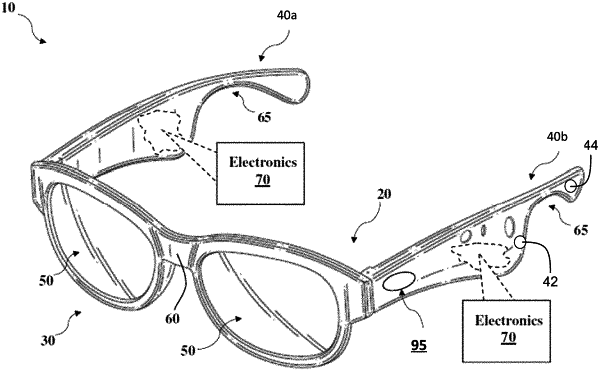| CPC H04R 1/105 (2013.01) [H04R 2460/01 (2013.01)] | 18 Claims |

|
1. An acoustic device comprising:
an eyeglass frame comprising two arms;
at least one acoustic transducer disposed such that, in a head-worn state, the at least one acoustic transducer is in an open-ear configuration in which an ear canal of a user of the acoustic device is unobstructed;
an array of two or more first microphones disposed along the same arm of the eyeglass frame, the array capturing audio preferentially from a first direction as compared to at least a second direction different from the first direction, wherein the audio captured using the array is processed using a beamforming process to capture audio preferentially from the first direction and is played back through the at least one acoustic transducer, and wherein the first direction is fixed in a direction substantially parallel to the arms of the eyeglass frame;
one or more second microphones that are distinct from the array of two or more first microphones, the one or more second microphones capturing additional audio from a direction of a mouth of the user; and
an active noise reduction (ANR) engine comprising one or more processing devices, the ANR engine configured to generate a driver signal for the at least one acoustic transducer, the driver signal having phases that reduce effects of audio captured from at least the second direction; and
an interface configured to receive a command from the user, wherein the acoustic device is configured to perform one or more functions in response to the received command.
|